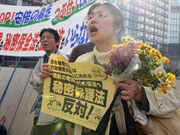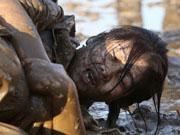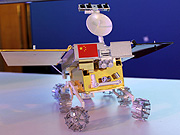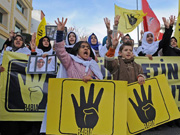WASHINGTON, Dec. 11 -- The pilot flying the Asiana Airlines flight 214, which crashed in San Francisco in July, was not properly trained and over-reliant on the autoflight system, U. S. National Transportation Safety Board said in a report released Wednesday.
The flying pilot, Lee Kang Kuk, was landing for the first time at San Francisco and had spent less than 40 hours flying the Boeing 777, although he had flew nearly 10,000 hours on several other jets, said the 45-page report released during a one-day investigative hearing into the accident in Washington.
Lee, 46, said he was "very stressful" about making a manual landing because the airport's glide slope indicator, a ground device that help pilots determine their altitude on approach, was out of service at that time due to a runway expansion project.
"The trainee captain was asked how confident he felt about his knowledge of the B777 autoflight system just prior to the accident, " the report said. "He stated he was not so confident because he felt he should study more."
The training pilot said he thought the autothrottle "was always working" on the Boeing 777 before the plane came in too low and too slow, but investigators found that the autopilot was disconnected and autothrottle changed from "thrust" to "hold" at an altitude of 1,600 feet, when the pilot called out "manual flight," the report said.
The plane was targeted to go 137 knots 73 seconds before landing, but dropped to as low as 103 knots just seconds before striking a seawall with the landing gear at the airport.
Three Chinese female students were killed and more than 180 people were injured when the Boeing 777, with a total of 291 passengers and 16 crew members on board, crashed and burst into flames at San Francisco International Airport on July 6.
 |

 Beijing tenants
Beijing tenants  China's aircraft carrier carrys out 1st docking manoeuver in Sanya
China's aircraft carrier carrys out 1st docking manoeuver in Sanya Japanese stage protest against secrecy bill
Japanese stage protest against secrecy bill Office ladies receive ‘devil’ training in mud
Office ladies receive ‘devil’ training in mud  Heavy cargo flights taking off
Heavy cargo flights taking off China's Li River named world's 15 best rivers for travelers
China's Li River named world's 15 best rivers for travelers  China launches Chang'e-3 lunar probe
China launches Chang'e-3 lunar probe Morsi's supporters protest against Egyptian military in Turkey
Morsi's supporters protest against Egyptian military in Turkey Selected sports photos of the week
Selected sports photos of the week
Day|Week|Month